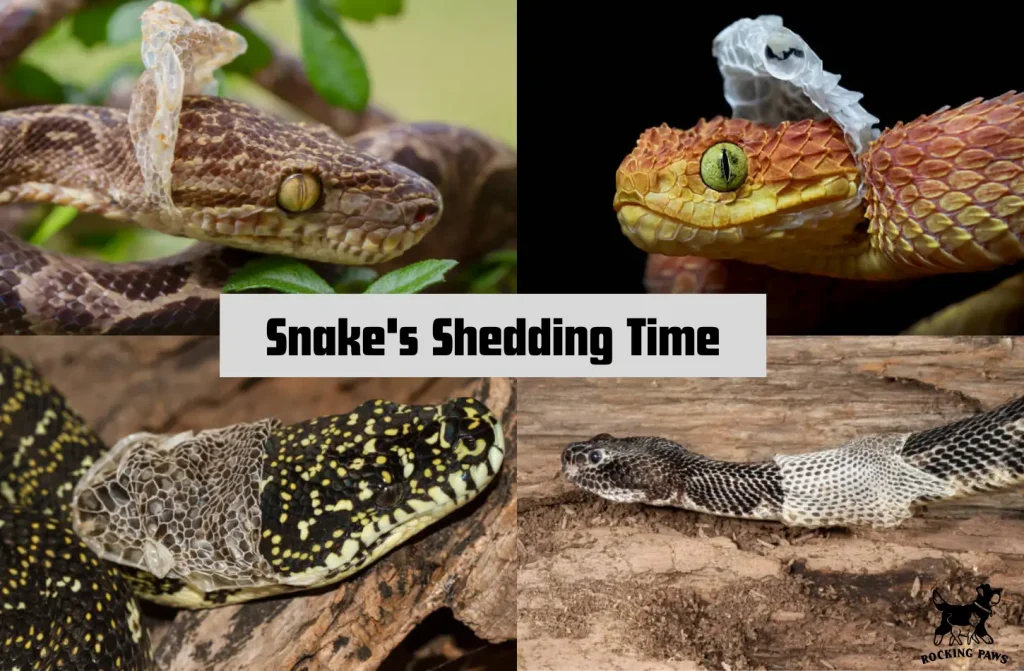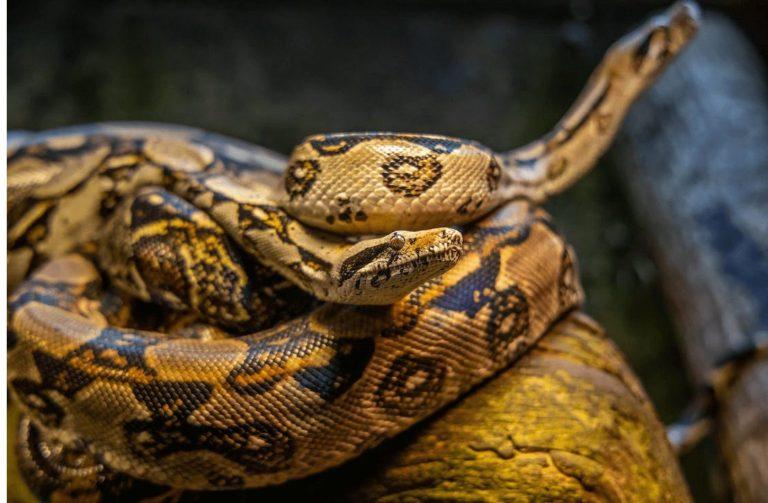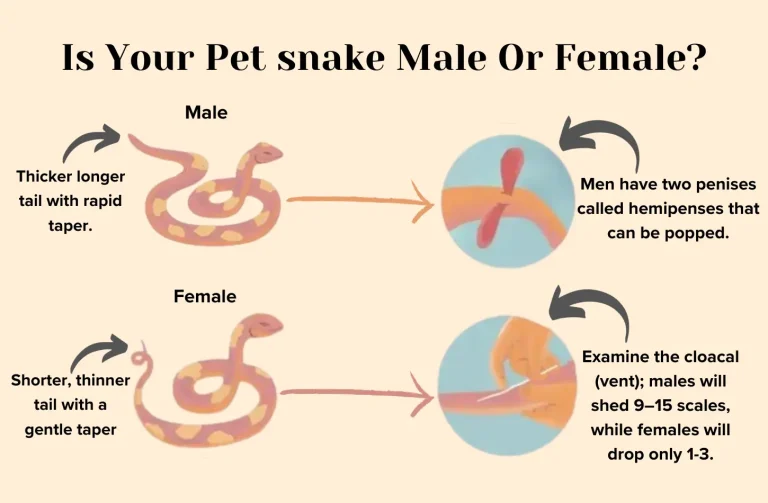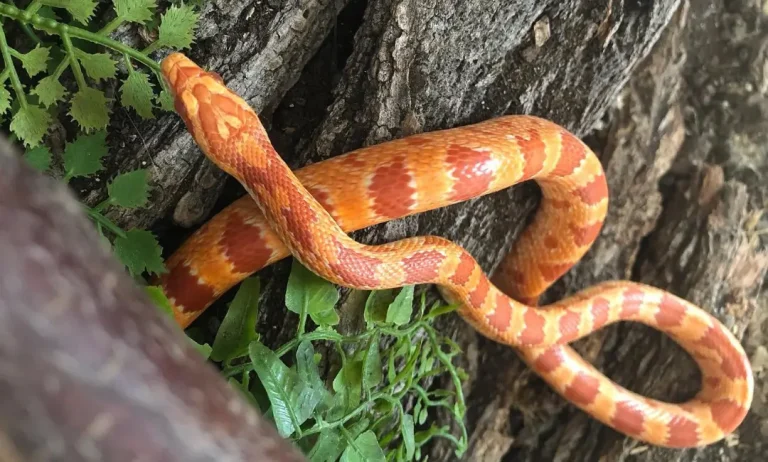
Welcome to taking care of snakes! Your scaly buddy has this cool habit of shedding its skin regularly, and it’s super important for its health. Even though shedding might stress out your snake a bit, you, as a caring owner, can make it a breeze. Just keep an eye out for signs that shedding is coming up and take some simple steps. Let’s dig into this interesting part of snake life and see how you can be the best snake friend during their shedding adventures.
One sunny day in my backyard, something caught my eye near the flowers – a sleek shape that looked like a snake! Excited and a bit scared, I tiptoed closer. But guess what? It wasn’t a real snake; it was a shed snake skin, pretending to be one.
At first, I thought a snake had visited our backyard, but after looking closely, I realized it was like a snake’s old clothes. The skin had the same patterns and textures, making it look just like the real thing. then i came to know Snakes shed for growth and to rid themselves of hitchhiking parasites. As they grow, their skin stretches, reaching a point where further growth becomes impossible. A new skin layer develops underneath, and when ready, the snake creates a rip, often near the mouth, by rubbing against rough surfaces.
To facilitate shedding, snakes might take a dip, allowing water to loosen the old skin. Once a breach is made, the snake gracefully maneuvers through the old layer until completely free. In the wild, you’ll often find shed snake skins inside out and in one piece.This shedding spectacle occurs regularly, with the average snake shedding two to four times a year. Young, growing snakes might shed every two weeks, while older ones may only do so twice annually. The snake’s skin adventure continues, a testament to the wonders of nature.
Understanding the Shedding Process:
Snake shedding is a cool and natural process that’s super important for your snake’s health. Unlike people who lose tiny skin cells bit by bit, snakes do something special – they shed their whole outer layer in one go, and we call it ecdysis. How often this shedding happens depends on your snake’s age, how fast it’s growing, and the place it lives. If it’s a young snake growing quickly, it might shed every few weeks.
Grown-up snakes don’t do it as much, maybe only a few times a year. When shedding is on the way, snakes make a new layer of skin under the old one. You can tell it’s happening when the old skin looks dull, and their eyes get a cloudy look. Your snake might act a bit different, like hiding more or not eating as much. Knowing about this shedding process is like getting a sneak peek into your snake’s life. It’s a time when they grow and get fresh skin. By understanding what’s going on and giving the right care, you’re helping your snake stay happy and healthy. Stick around to find out more about making shedding easy for your scaly buddy!
Signs That Your Snake is Ready to Shed:
Recognizing the signs that your snake is about to shed is essential for providing the proper care during this natural and crucial process. Here are common indicators to help you identify when your snake is gearing up for shedding:
- Cloudy Eyes: One of the most distinctive signs is a change in your snake’s eye color. The eyes will turn a cloudy, bluish hue. This is a result of a lubricant produced beneath the outer skin layer, aiding in the shedding process. Just before shedding, the eyes should clear up again.
- Dull Skin Appearance: The old skin takes on a dull or hazy look, signaling the impending shedding. Initially, you might notice a pinkish tint on your snake’s belly.
- Altered Behavior: Your snake may exhibit changes in behavior, such as increased hiding. This is a natural response to the discomfort associated with shedding. Additionally, your pet may become more skittish or defensive, especially when its vision is temporarily impaired.
- Reduced Appetite: It’s common for snakes to experience a decrease in appetite or a complete refusal to eat leading up to shedding. This is part of their natural behavior as they divert energy towards the shedding process.
- Seeking Rough Surfaces or Water: Your snake might actively look for rough surfaces within its enclosure to aid in rubbing off the old skin. Alternatively, it may seek out water for soaking, which helps facilitate the shedding process.
Tips for a Stress-Free Shedding Process:
Ensuring a stress-free shedding process for your snake involves thoughtful care and attention to its unique needs during this natural event. Here are some valuable tips to guide you through facilitating a smooth shedding experience for your scaly companion:
- Provide Suitable Cage Accessories:
- Include clean driftwood or rocks with smooth surfaces in the snake’s enclosure. These accessories aid in the rubbing off of old skin, ensuring a more seamless shedding process.
- Ensure that the cage furnishings are free of sharp edges that could potentially harm the delicate shedding skin.
- Maintain Optimal Humidity:
- Create a humid environment within the snake’s enclosure, as increased humidity is crucial for successful shedding.
- Introduce a shallow dish of water, allowing the snake to soak itself if needed during the shedding process.
- Consider adding a humidity hide box, a plastic enclosure with damp sphagnum moss, providing an additional space for the snake to regulate humidity levels.
- Minimize Handling:
- Avoid unnecessary handling just before and during the shedding process, as the new skin is delicate and more prone to tearing.
- If handling is necessary, do so gently to reduce stress on the snake.
- Adjust Feeding Routine:
- Understand that snakes commonly exhibit a reduced appetite or may refuse food altogether leading up to shedding. This is a natural behavior.
- Consider offering a smaller meal than usual during this period to divert more energy towards the shedding process rather than digestion.
- Examine Shedding Completion:
- After shedding, carefully inspect both the shed skin and the snake to ensure the process is complete.
- Ideally, the entire skin should come off in one piece. Check that the eye caps have been shed, leaving no holes where the eyes were.
- Remove any remnants of old skin that may have been retained.
Addressing Incomplete Shedding:
Taking care of incomplete shedding, also called dysecdysis, is super important for keeping your snake healthy. If your snake doesn’t shed its skin properly, it might mean there’s a problem that needs looking into. Here’s a detailed guide on what to do:
- Examine Habitat Conditions:
- Look at where your snake lives, checking if it’s humid enough, warm, and what’s on the floor. Not enough humidity is often why snakes don’t shed well. Make sure the place is just right for your snake’s type.
- Adjust Humidity Levels:
- Make the air wet in your snake’s house so it can shed its skin better. You can do this by spraying water inside, giving a bigger water bowl, or putting a box with wet moss to keep things damp.
- Evaluate Substrate:
- Assess the substrate in the enclosure. A substrate that retains moisture well, such as coconut husk or cypress mulch, can contribute to a humid environment. Avoid substrates that can become overly dry.
- Consult with a Veterinarian:
- If fixing your snake’s home doesn’t help, talk to a special vet for reptiles. If your snake doesn’t shed properly, it might mean there’s a health problem like sickness, bugs inside or outside, infections inside, or not enough of the right food. The vet can figure out what’s wrong and help your snake feel better.
- Safe Skin and Eye Cap Removal:
- If you have to help your snake shed, be careful and use safe ways to take off its old skin and eye caps. If you’re not sure how to do it the right way, talk to a special vet for reptiles to avoid hurting your snake.
- Professional Veterinary Assistance:
- If your snake keeps having problems shedding or looks sick, go to a special vet for reptiles as soon as possible. The vet will check your snake really well, do some tests, and suggest the right treatment to help your snake, depending on what it needs.
- Explore the Root Cause:
- Work together with the vet to figure out why your snake isn’t shedding right. Fixing the main problem is super important to stop it from happening again in the future when your snake sheds its skin.
- Routine Health Checks:
- Make a plan to regularly check your snake’s health. Take it to a special vet for reptiles sometimes so they can look at it closely. Doing this often helps find and fix problems before they become big.
By taking a proactive approach and addressing incomplete shedding promptly, you contribute to the overall well-being of your snake.
Conclusion:
Understanding and actively participating in your snake’s shedding process is crucial for their well-being. By recognizing signs, implementing proper care, and addressing any issues promptly, you contribute to a stress-free shedding experience for your snake, promoting their overall health and vitality.
Article Resource:
- Da Silva MO et al. Spectaculitis and Spectacular Dysecdysis: A Histologic Description. Veterinary Pathology, vol. 52, no. 6, pp. 1220-1226, 2015. doi:10.1177/0300985815588605
- Disorders and Diseases of Reptiles. Merck Veterinary Manual.






